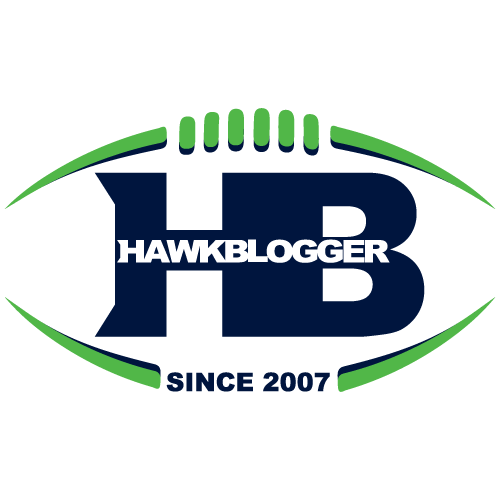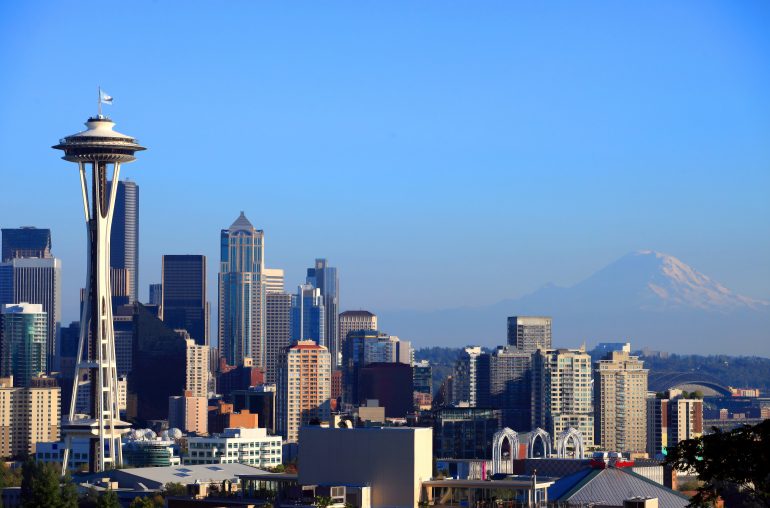Malcolm Smith returned to full practice yesterday and returned an interception for a touchdown. The play elicited chants of “MVP! MVP!” from his teammates. It will not, however, help the Super Bowl MVP get his name announced as a starter in a very crowded linebacker group. Further, early indications are that Smith will not be re-signed when both he and K.J. Wright become free agents. That would be a mistake.
MIKEs, and SAMs, and WILLs, oh my!
If you have read this blog long enough, you have started to learn the terms for the different linebacker positions in a 4-3 defense. The middle linebacker is also known as the MIKE. The strongside linebacker is known as the SAM, and the weakside linebacker is known as the WILL. Each position requires different skill sets, but many of the Seahawks linebackers can play multiple spots.
The MIKE requires full command of the defense and is among the most punishing. You are often asked to run head-on into blockers and running backs. You also must be talented in zone coverage, as the position requires patrolling the middle of the field. Bobby Wagner has this role on lock for the foreseeable future. Wright is also a gifted MIKE, having started his career at the position. Brock Coyle is currently the back-up behind Wagner, but should Wagner miss any length of time, it would not be shocking to see Wright slide back to that position and allow a more seasoned player like Smith ascend.
SAM linebackers need to be big. They play at the line of scrimmage in this defense, often right off the shoulder of the 5-technique defensive end (Red Bryant before, Michael Bennett now). Their job against the run is to set the edge by aggressively pushing the outside shoulder of the tight end backwards and funnelling any run back to the inside. Aaron Curry was very good at this. It was the only thing he was good at. A SAM must also be able to drop into zone coverage, and is asked to rush the passer more than either of the other linebacker spots. Bruce Irvin is the starter there for the foreseeable future once he returns from injury (currently expected to be next week). Wright was a great SAM. He famously tipped a ball, while playing SAM, to Red Bryant, who returned it for a touchdown against the Bears a few years ago. Smith started at SAM last year while Irvin was on the suspended list. He is not ideal in that role as his strength is not on par with either Wright or Irvin. Long arms also help when setting the edge, something both Irvin and Wright have and Smith does not.
The prototypical WILL linebacker is fleet of foot, excels at getting off of blocks, is a good open field tackler, and can match up in man coverage against a tight end. These players tend to be lighter, often in the 230-range, and very fast. Offenses tend to run in this direction because the Seahawks employ an undersized defensive end in the LEO who is primarily a pass rusher. This means the offense gets its left tackle run blocking an undersized end, which is far more tempting than tangling with a big 5-technique and big SAM linebacker. Wright started here last year. Smith finished here, and did it with flair.
Putting players in position to succeed
Pete Carroll stresses the importance of finding a player’s strengths, and putting them in a position to best utilize those talents. Wagner ended last year playing at a Pro Bowl level. He is clearly in a spot that suits him well. Irvin was a very solid SAM last year in all facets of the position. He is a plus in pass coverage because of his speed and experience playing safety in college. He is a plus in pass rushing, and is above average in setting the edge versus the run. His backside pursuit is a plus as well.
Smith was not in his best position when playing SAM. He averaged 4 tackles and only had 1 tackle for loss in the three games he started there before Irvin came back. He is made to play WILL in this defense. He averaged 6.4 tackles, had 1 sack, 7 TFLs, 6 passes defensed, 4 interceptions and 2 touchdowns in 8 starts at WILL and a half-game in San Francisco when Wright went down with an injury. He was playing at a Pro Bowl level. He was playing at a Super Bowl MVP level.
Wright is a starting-quality player at all three linebacker positions. He might be the only player who could say that on the Seahawks roster. He famously defended Jimmy Graham in the first Saints matchup. Of course, Smith did the same in the playoffs to much less fanfare. He is an excellent open-field tackler, and can use his ridiculously long arms to get off blocks well. He is a student of the game, and can read plays as well as anyone on the defense. His discipline is excellent, and helps keep running backs from making a backside cut by staying in his lane instead of being sucked into pursuit, something Irvin still needs to improve on. Wright averaged 6.4 tackles, had 1.5 sacks, 6 TFLs, and 4 passes defensed in 12 starts at WILL last year. Smith outpaced him in every category except being tied for tackles.
Korey Toomer was initially used at WILL as a rookie, but has been transitioned to SAM. He is an excellent pass rusher with great quickness. He struggled against the run back in the day, but who knows how far he has come since then. Kevin Pierre-Louis is lightning quick and is getting most of his reps at WILL. That is the most likely place for him to find time down the road.
Mike Morgan, should he make the team, is strictly a SAM. He is an average player there, who has trouble staying disciplined in his gap, and has been caught out of position multiple times the past couple of years when he has gotten a chance for playing time, leading to big runs.
The case for Malcolm
There is little doubt that when both Smith and Wright hit the free agent market, Wright will be the more sought-after player. He can play in either a 4-3 or a 3-4, and can play multiple positions in those defenses at a high level. He is big and mostly durable. Smith is undersized by NFL standards, and is really limited to being a WILL in a 4-3 defense. He happens to be very good at it, but many teams would rather draft a young linebacker for that role than spend to bring one in. In any event, Wright will be a higher-priced player than Smith.
Knowing that Irvin is signed this year and next, and that they are not keen on him moving back to LEO, the Seahawks are set at SAM. Wagner is in the same situation as Irvin, so the Seahawks are set for now at MIKE. That leaves a decision between Smith and Wright for WILL.
Wright can play WILL, but he does not play it as well as Smith. He will also require more cap dollars than Smith to keep around. There are fair questions about whether the undersized Smith can hold up to the pounding of a full season as a starting linebacker. But the team has a hedge with the young Pierre-Louis taking a year to start developing. They will also likely add more to the pile in next years draft.
The team could choose to let both Smith and Wright walk after the season, but that would seem cavalier. Better would be to spend less money on the player who better fills the role the team needs at WILL. Take the millions saved there and spend it on Cliff Avril or another position of need. Consider, Eric Winston cost less than a couple million dollars. Kevin Williams came rather cheaply as well. Each million saved will be crucial after Russell Wilson gets his mega-deal.
The status quo would be to extend Wright and keep your starting crew intact. There are far worse fates than that. Spending extra money to re-sign a player to play his third-best position defies the logic that the Seahawks front office has been so skilled in following. Play the best players in their best roles. Smith deserves to be more than a Super Bowl MVP. He deserves a future with the Seahawks.

